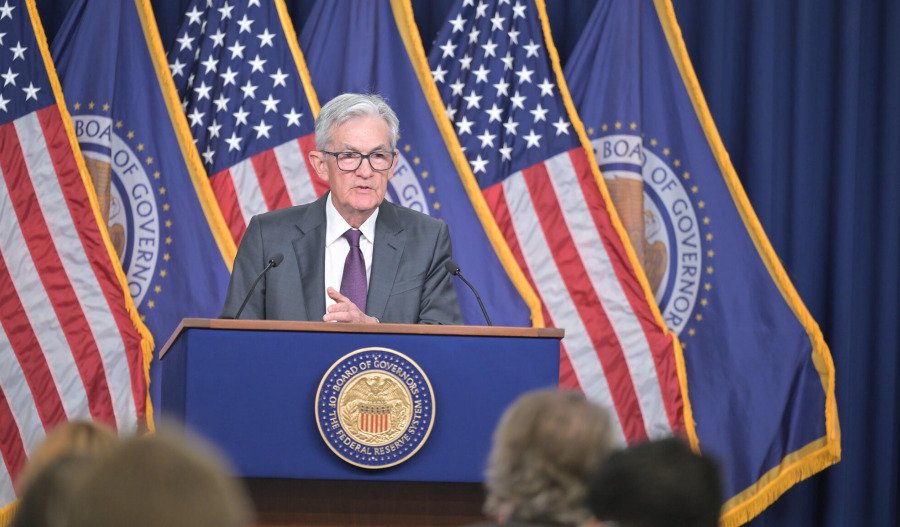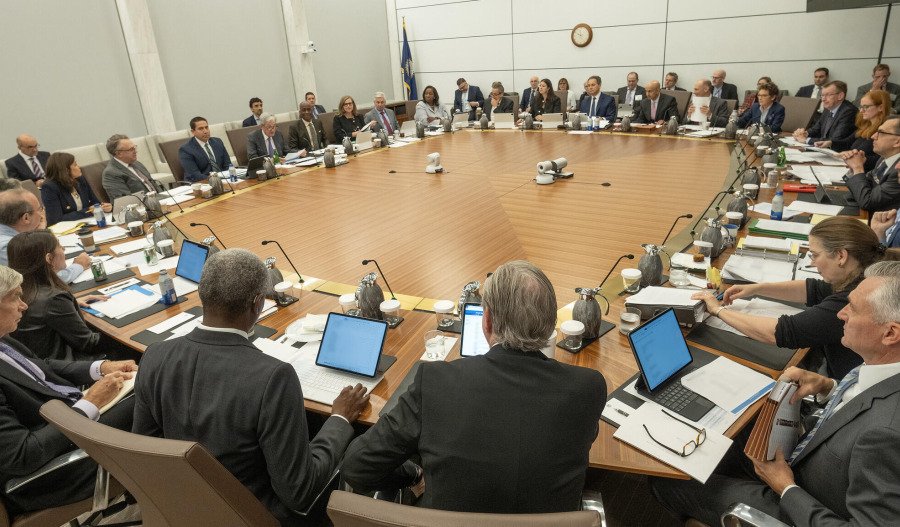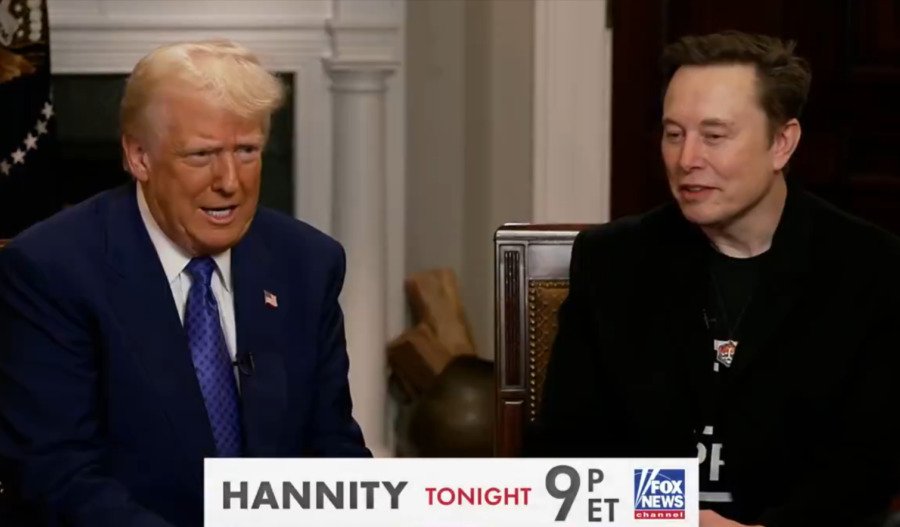The Federal Reserve is adopting a patient stance on further interest rate cuts, as indicated by recent statements from various Fed officials.
This consensus emerges against a backdrop of resilient economic growth, inflation above the central bank's 2% target, and significant policy uncertainty.
Fed Chair Jerome Powell, in his semiannual Monetary Policy Report to Congress, noted the strength of the U.S. economy and the need for further confirmation that inflation is sustainably moving towards the 2% goal before implementing additional easing measures.
Powell stated, “The economy is strong overall and has made significant progress toward our goals over the past two years.”
Economic Activity and Labour Market Remain Solid
Recent indicators suggest that U.S. economic activity has continued to expand at a solid pace. Gross domestic product rose 2.5% in 2024, bolstered by resilient consumer spending. The labour market also remains robust, with the unemployment rate stabilising at a low level in recent months.
The Federal Open Market Committee (FOMC) noted in its January statement that “labour market conditions remain solid”.
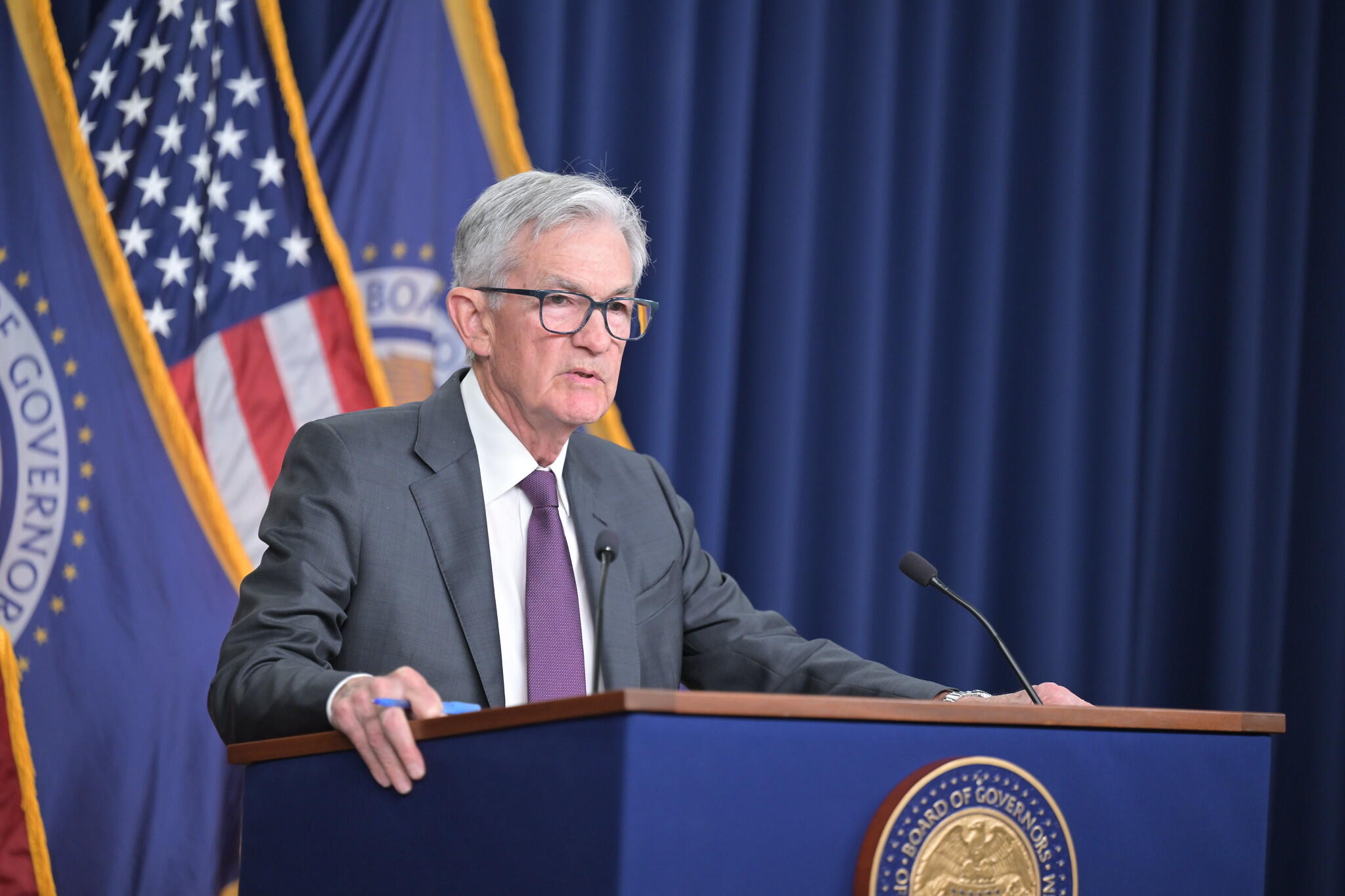
New York Fed President John Williams anticipates real GDP growth to move to around 2% in 2025 and 2026, which is near his estimate of its long-run potential rate.
He expects the unemployment rate to remain essentially flat at around 4 to 4.25%.
Inflation Concerns Persist
Despite progress in lowering inflation from its peak, it remains somewhat elevated above the Fed's 2% target.
As a result of the current restrictive monetary policy, Powell expressed confidence that inflation will remain on track.
However, fresh tariff threats from President Donald Trump are also being closely monitored by Federal Reserve officials, with Chicago Federal Reserve President Austan Goolsbee noting that "supply-side disruptions can have a material impact on aggregate inflation”.
Atlanta Fed President Bostic stressed the need for clarity at the February 3 meeting of the Atlanta Rotary Club, noting that he is “prepared”, “comfortable” and “satisfied” to “wait for a while” before lowering interest rates further.
Bank of Boston President Collins suggested that broad-based tariffs would likely affect prices, but the exact impact remains uncertain due to evolving policies.
Like Bostic, she said that if inflation expectations remain anchored, the Fed would attempt to look past tariff-driven price increases.
Fed Governor Kugler echoed this sentiment, commenting: "The potential net effect of new economic policies also remains highly uncertain and will depend on the breadth, duration, reactions to, and, importantly, specifics of the measures adopted.
"Going forward, in considering the appropriate federal funds rate, we will watch these developments closely and continue to carefully assess the incoming data and evolving outlook."
Fed Vice Chair Jefferson remarked that he expects “the path of inflation to continue to be bumpy”, while Governor Waller believes that ”if this winter-time lull in progress is temporary, as it was last year, then further policy easing will be appropriate".
Waller also noted, “My baseline view is that any imposition of tariffs will only modestly increase prices and in a non-persistent manner. So I favour looking through these effects when setting monetary policy to the best of our ability.”
Meanwhile, Chair Jerome Powell vouched for the strength of the economy President Donald Trump inherited even as he deferred on questions about tariffs.
"It's not the Fed's job to make or comment on tariff policy...Ours is to try to react to it in a thoughtful, sensible way."
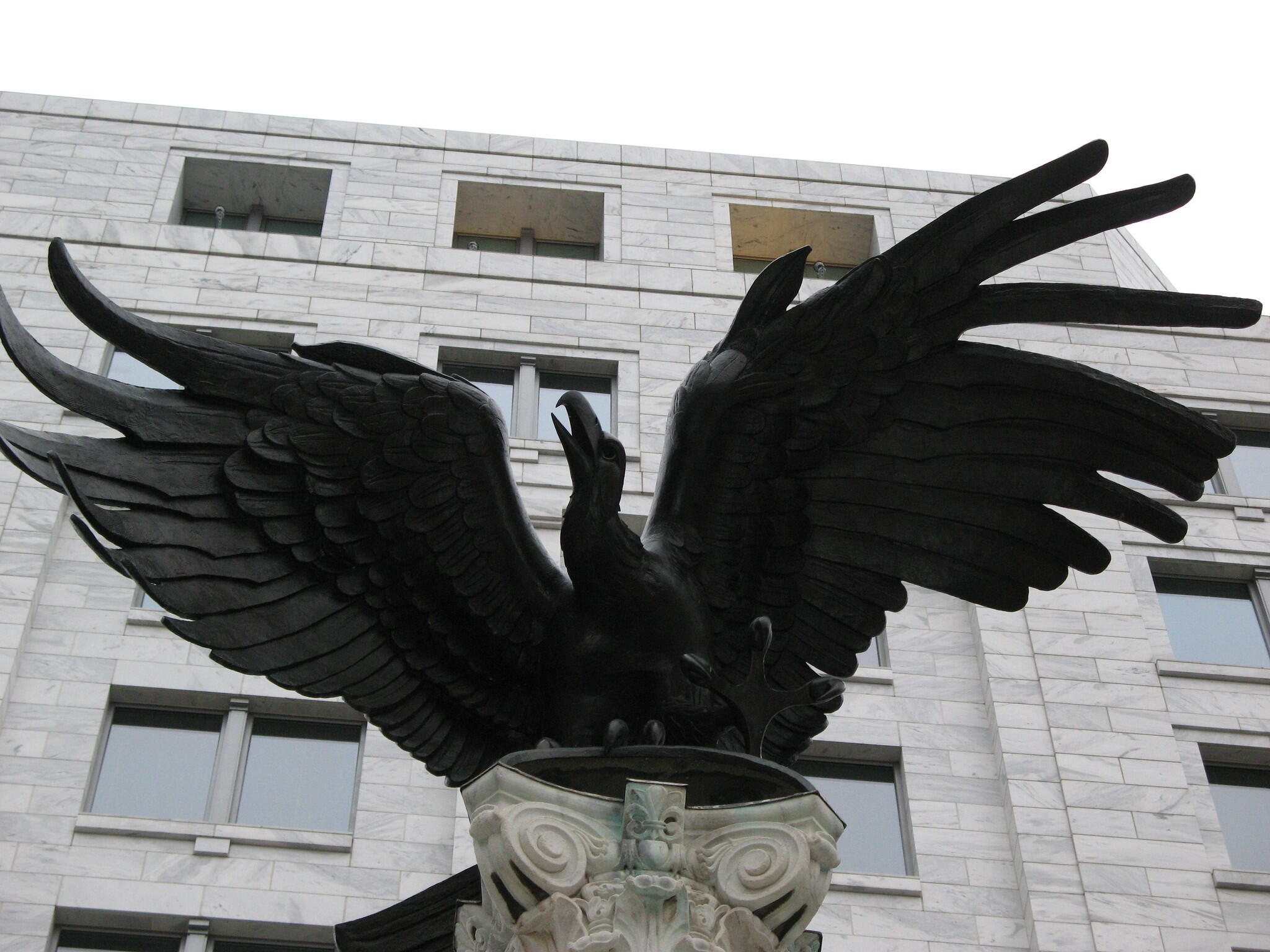
Powell Stresses Fed’s Independence
Federal Reserve Chair Jerome Powell reiterated the central bank’s commitment to making decisions based on economic data rather than political pressure during his testimony before the House Financial Services Committee.
“People can be confident that we’ll continue to keep our heads down, do our work, and make our decisions based on what’s happening in the economy,” Powell stated, addressing lawmakers on the second day of his semiannual testimony to Congress.
His remarks followed a post earlier in the day from President Donald Trump, who wrote on social media, “Interest Rates should be lowered, something which would go hand in hand with upcoming Tariffs!!!”
However, Powell signalled last month that after three rate cuts in late 2024, the Fed would hold off on further reductions until it saw clearer signs that inflation was moving sustainably toward its 2% target.
Many Fed officials remain cautious about the economic impact of Trump’s tariff policies, both those already enacted and those under consideration. Economists widely warn that tariffs could drive inflation higher, at least in the short term.
U.S. government data showed that consumer prices rose 3% in January, up from 2.4% in September, which had been a three-and-a-half-year low. The increase in inflation further reduces the likelihood of an imminent rate cut.
Policy Stance and Future Outlook
The FOMC decided at its January meeting to maintain the target range for the federal funds rate at 4.25 to 4.5%.
Powell reiterated that the Fed is in no hurry to adjust its policy stance, given that monetary policy is significantly less restrictive and the economy remains strong.
Powell stated during his press conference, “Over the course of our three previous meetings, we lowered our policy rate by a full percentage point from its peak. That recalibration of our policy stance was appropriate in light of the progress on inflation and the rebalancing in the labour market. With our policy stance significantly less restrictive than it had been and the economy remaining strong, we do not need to be in a hurry to adjust our policy stance.
“We know that reducing policy restraint too fast or too much could hinder progress on inflation. At the same time, reducing policy restraint too slowly or too little could unduly weaken economic activity and employment.”
He added, “We are not on any preset course.”
Minutes from the January meeting noted, “Many participants noted that the Committee could hold the policy rate at a restrictive level if the economy remained strong and inflation remained elevated, while several remarked that policy could be eased if labour market conditions deteriorated, economic activity faltered, or inflation returned to 2% more quickly than anticipated.”
Policy Uncertainties and Market Expectations
While the Fed remains attentive to risks on both sides of its dual mandate, Powell noted that the economic outlook is uncertain, particularly regarding potential fiscal, trade, immigration, and regulatory policies.
The FOMC statement reaffirmed that the risks to their employment and inflation goals are "roughly in balance" and reiterated the Fed's easing bias.
Market expectations, as reflected in the CME Group FedWatch Tool, show a less-than-10% probability that the Fed will lower the policy rate by 25 basis points in March. This cautious outlook aligns with the Fed's patient approach to future rate adjustments.
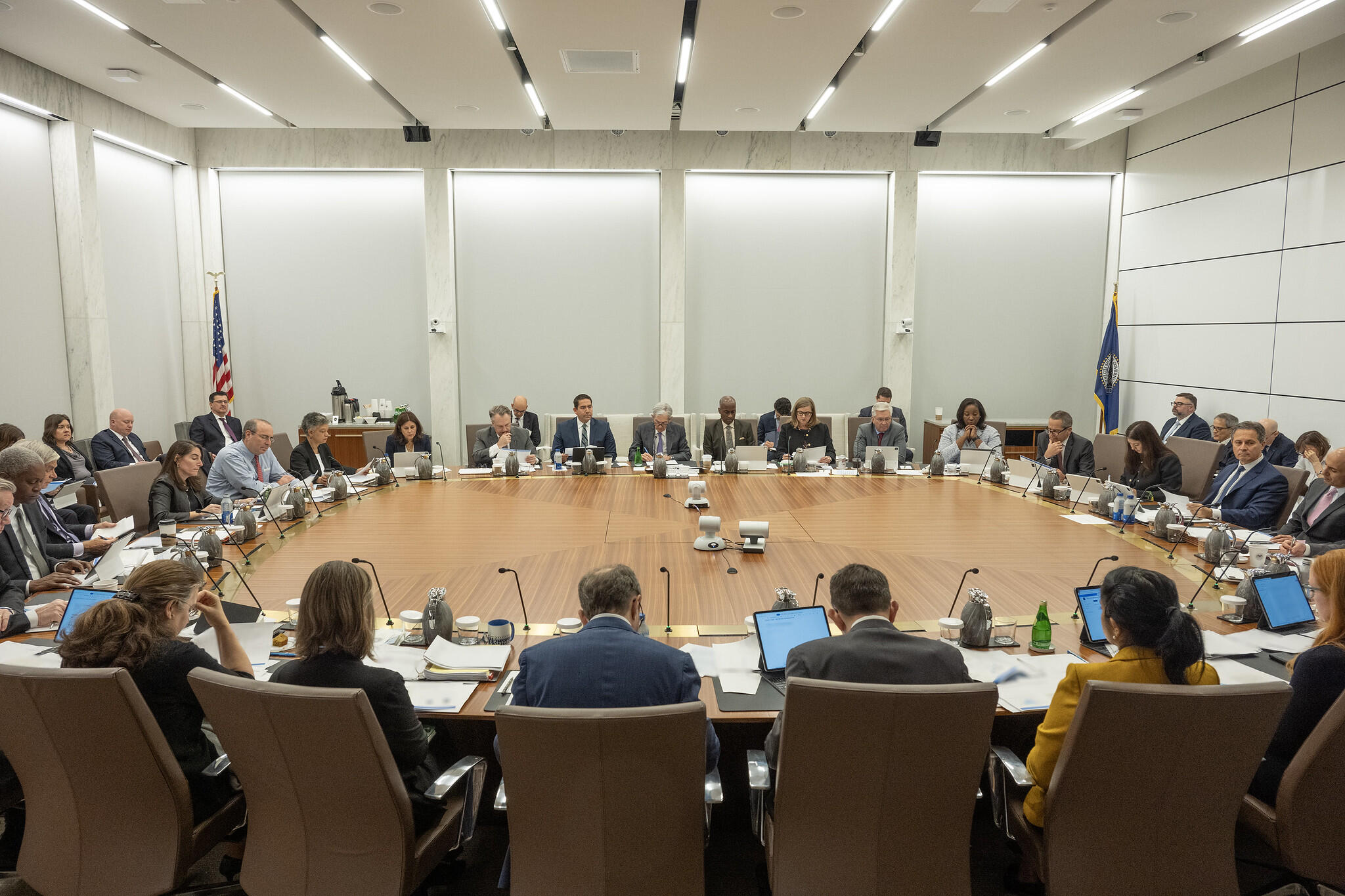
Conclusion
As the Fed navigates the complex economic landscape of 2025, policymakers remain committed to the Fed's dual mandate of maximum employment and price stability.
The central bank's data-dependent approach and careful consideration of evolving economic conditions will be crucial in determining the path of monetary policy in the coming months.

